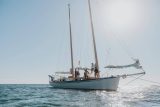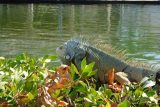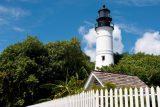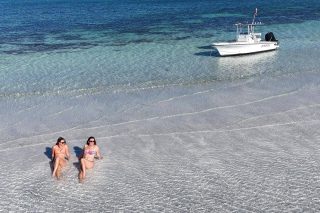Marine Life In Key West
General
Posted by: Danger Charters
10 months ago
Key West marine life is one of our favorite topics at Danger Charters – it’s the backdrop to our work day (it’s OK to be jealous!), the focus of much of our leisure time, and, of course, an important source of food locally. It’s our pride and privilege to educate our guests about Florida fish and wildlife and a joy to share in their awe of Key West’s native animals.
What kind of animals live in the Florida Keys? Let’s dive into the beauty that lies underwater right off our stunning shores!
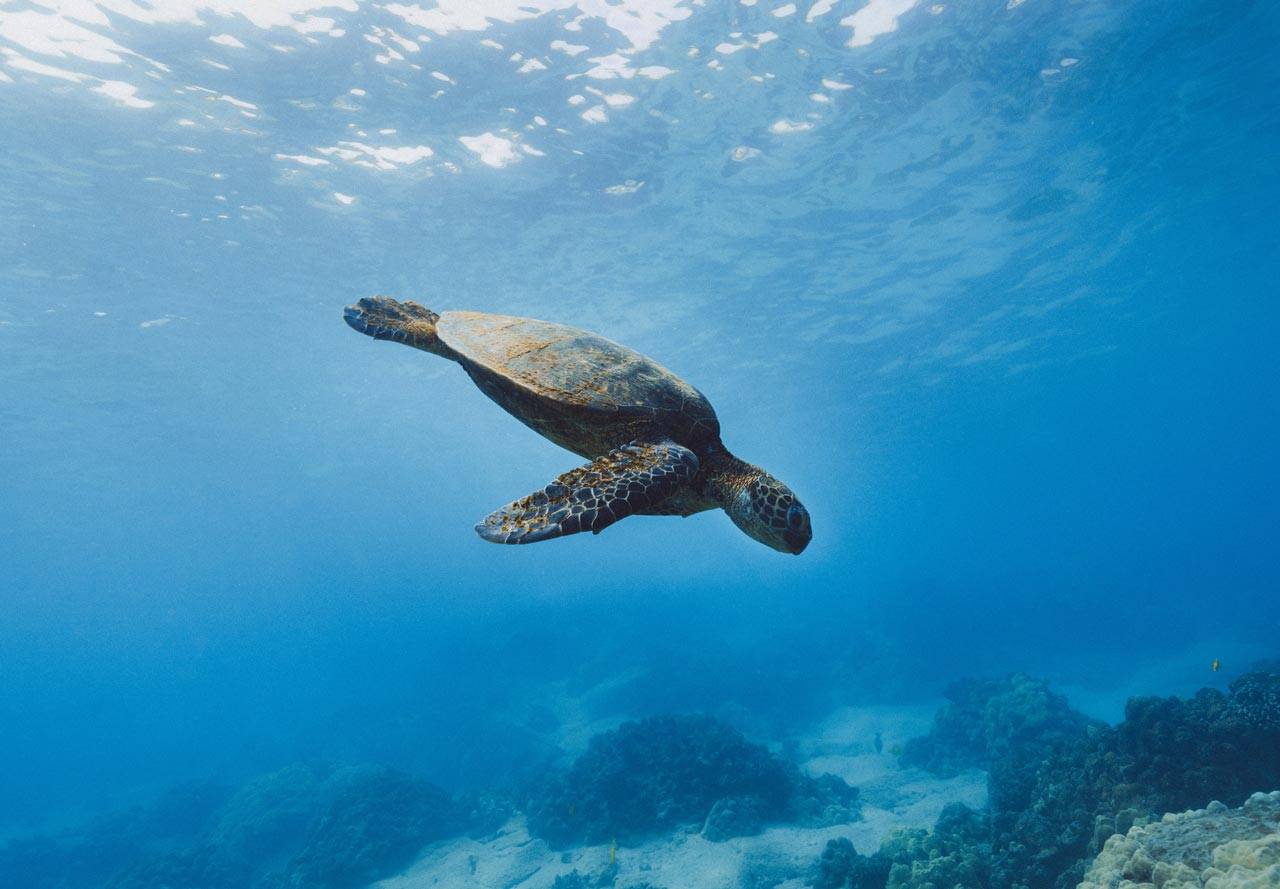
What Ocean Life is in the Keys?
The coral reefs and mangrove forests of Key West are teeming with life! The warm, calm waters of the Backcountry provide the perfect environment for many juvenile fish species and other sea creatures to safely mature before they move on to more open waters, oftentimes staying near coral reefs and rocky outcrops for protection from predators.
Before we get into the specific animals found in the mangroves and coral reefs of Florida, let’s answer three of our most frequently asked questions right off the top:
Are there octopuses in Key West?
Yes, particularly the Common Octopus, which is often found in coral reefs and rocky areas.
Do the Florida Keys have whales?
We occasionally see whales, including species like the Humpback Whale and the North Atlantic Right Whale, primarily during their migration seasons.
Are there many sharks in the Keys?
Yes, the Florida Keys are home to many shark species. Those we most commonly see are Lemon Sharks, which are not generally aggressive toward humans and are most active during the night, and Nurse Sharks, which are known for their docile nature. Hammerhead Sharks can be found in shallow and deeper waters around the Florida Keys in summer. They eat fish and stingrays and are not typically a threat to divers. Although, they can be aggressive when provoked.
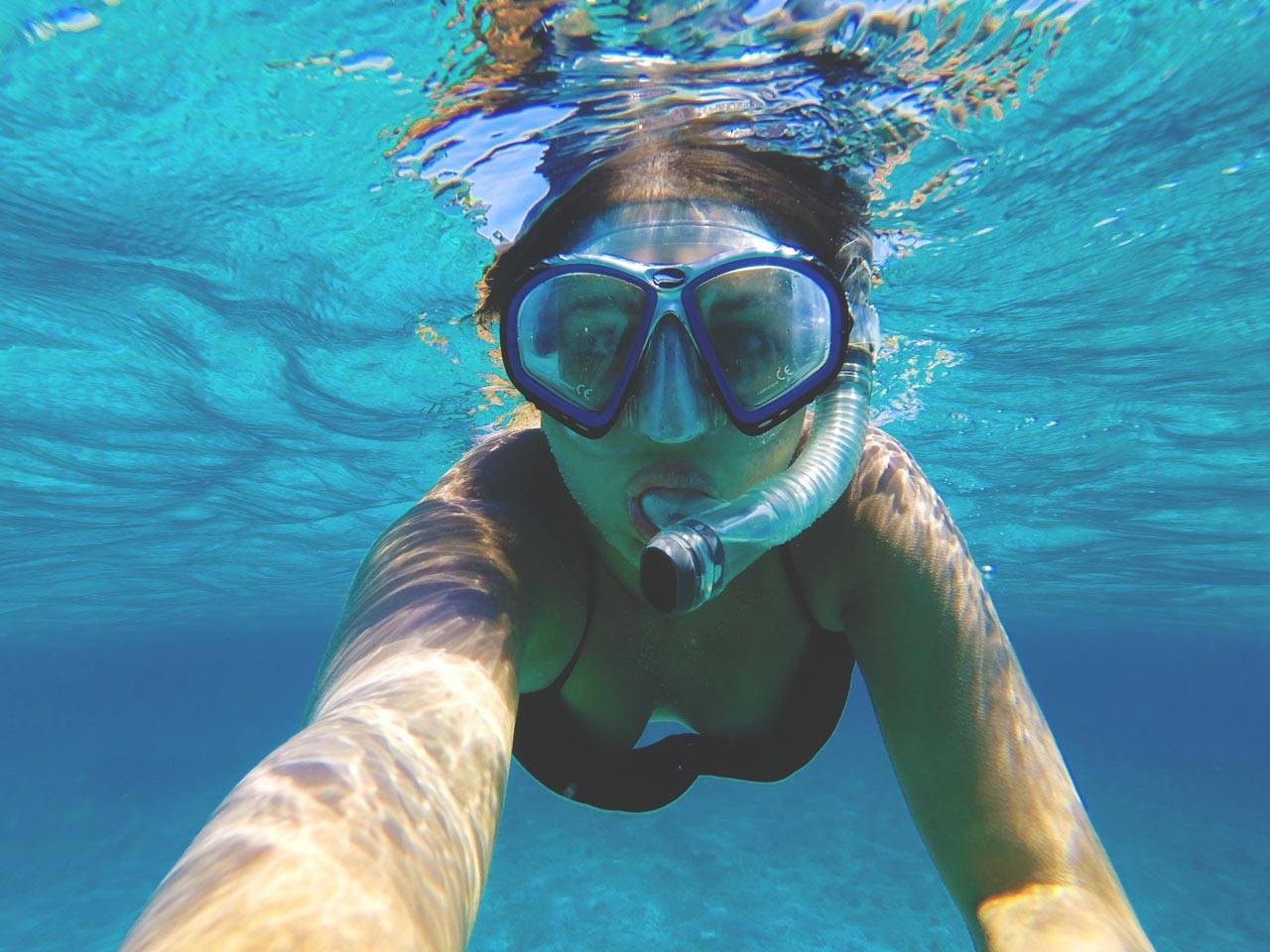
Key West Fish
Colorful and abundant, the fish of Key West are easily spotted while snorkeling or kayaking.
Blue Tang
- Bright blue with a yellow tail; frequently identified as Dory from Finding Nemo
- Primarily eats algae
- Seen year-round
Mahi-Mahi (Dolphinfish)
- Brightly colored fish with a distinctive dorsal fin
- Found in deeper waters; frequently sought during fishing tournaments
- Eats fish, squid, and crustaceans
- Seen year-round, more commonly spotted in summer
- Follows warm ocean currents and food sources
- Typically grilled, blackened, or served as fish tacos
Nassau Grouper
- Brown to reddish-brown body with darker stripes and spots
- Eats fish and crustaceans
- Seen year-round; higher activity during spawning season (December to February)
- Typically grilled, baked, or fried; often served in sandwiches or as a main course
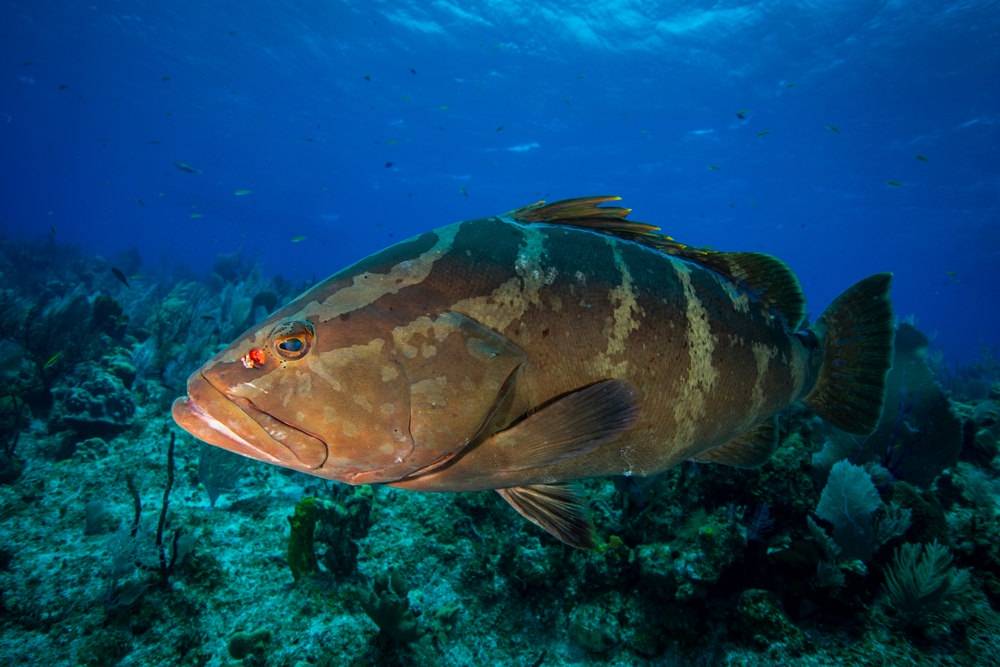
Queen Angelfish
- Striking blue and yellow colors with a crown-like spot on the forehead
- Eats sponges, algae, and small invertebrates
- Seen year-round
Queen Triggerfish
- Distinctive yellow, green/blue coloration; curved, bright blue bands from mouth to pectoral fin
- Eats sea urchins, mollusks, and crustaceans
- Seen year-round
- Eaten raw or cooked; white meat that tastes similar to crab
Stingrays
- Most commonly Southern Stingray and Atlantic Stingray
- Flat, diamond-shaped body; long, whip-like tail, can have venomous barbs
- Eats fish, crustaceans, and mollusks
- Seen year-round; increased visibility in warmer months
Yellowtail Snapper
- Bright yellow stripe running along the body and a forked tail
- Eats small fish, crustaceans, and plankton
- Seen year-round, with peak visibility during warmer months
- Commonly featured on Key West menus grilled, fried, or served as ceviche
Native Invertebrates, Crustaceans & Echinoderms
The ocean floor is home to numerous marine animals that live in Key West year-round.
Caribbean Spiny Lobster
- Long, spiny antennae and a body covered in spines
- Eats mollusks, crustaceans, and detritus
- Seen year-round, more active at night
- Highly desirable; usually grilled, boiled, or broiled
Gorgonian Corals
- Soft corals with fan-like structures, often vibrant in color.
- Eats plankton and small organic particles
- Seen year-round
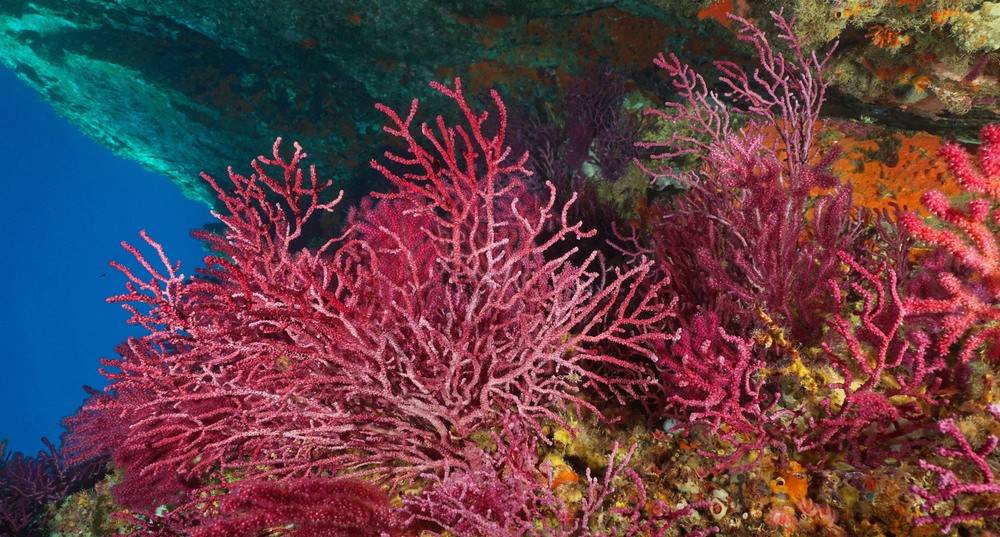
Key West Pink Shrimp
- Medium-sized with a distinctive pink coloration, long antennae, and a slightly curved body
- Eats detritus, algae, and small organisms
- Seen year-round, with peak abundance in winter months
- Locally harvested shrimp known for their sweet flavor
- Boiled, grilled, or fried; often served in shrimp cocktail and salads
Long-Spined Sea Urchin
- Thick pointed spines; not venomous
- Eats algae and detritus
- Seen year-round
Queen Conch
- Large, spiral shell with a pink interior.
- Eats algae and detritus
- Seen year-round
- A staple in local cuisine; conch fritters, conch salad, or conch chowder
Stone Crab
- Dark brown to reddish-brown body; large, powerful claws that are distinctly black-tipped
- Eats mollusks, small fish, and detritus
- Seen year-round, with peak season from October to May
- Only the claws are harvested; the crab is returned to the ocean to regrow them
- Commonly served chilled with mustard sauce
Key West Mammals & Reptiles
Several visitors to our island paradise have a list of marine animals they hope to see while on vacation – the sea turtles of Key West, our playful dolphins, and the docile, lumbering manatee.
Bottlenose Dolphin
- Blue-gray on top; light gray sides and belly
- Eats fish, squid, and crustaceans
- Seen year-round; commonly seen in spring and fall
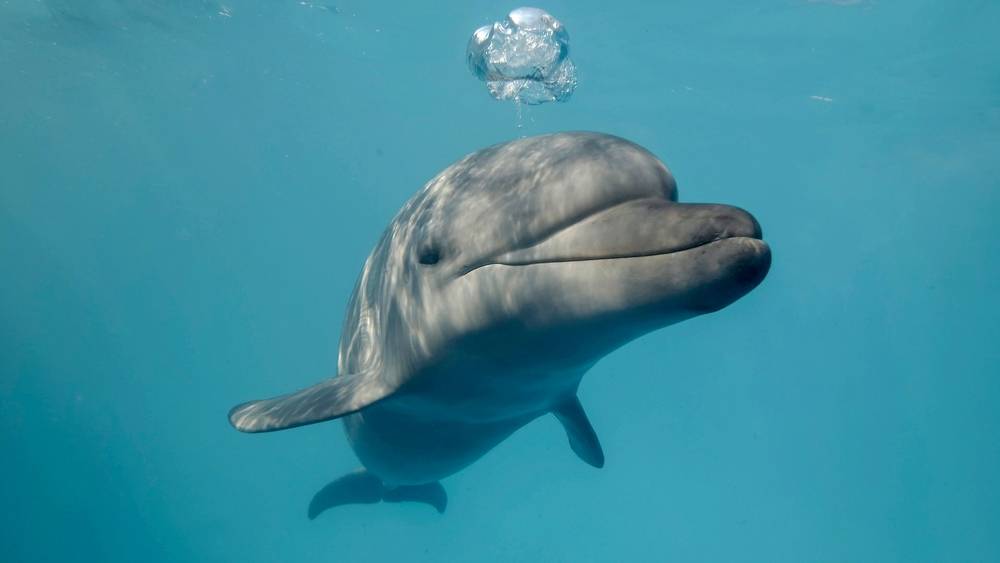
Green Sea Turtle
- Small head, streamlined body; olive-brown upper shell, white or yellow undershell
- Eats seagrass and algae
- Seen year-round; nesting season from June to September
- Migrates long distances between feeding grounds and nesting sites
Loggerhead Sea Turtle
- Block-shaped head; reddish-brown upper shell, pale yellow undershell
- Eats jellyfish, crustaceans, and mollusks
- Seen year-round; nesting season from May to August
- Migrates between feeding grounds and nesting sites
West Indian Manatee
- Gray, seal-like body and paddle-shaped tail; typically 9-13 ft long
- Known as a sea cow in some places
- Eats seagrass and freshwater vegetation
- Seen year-round, more common in winter months
Tips for Enjoying Key West Marine Life
The reefs and mangrove forests of the Florida Keys are essential to our region’s vibrant biodiversity. At Danger Charters, we are diligent in not disturbing or injuring these fragile ecosystems and ask that our guests refrain from removing or collecting marine life. These are best practices when kayaking, snorkeling, or enjoying other water sports while in Key West and anywhere else in the world.
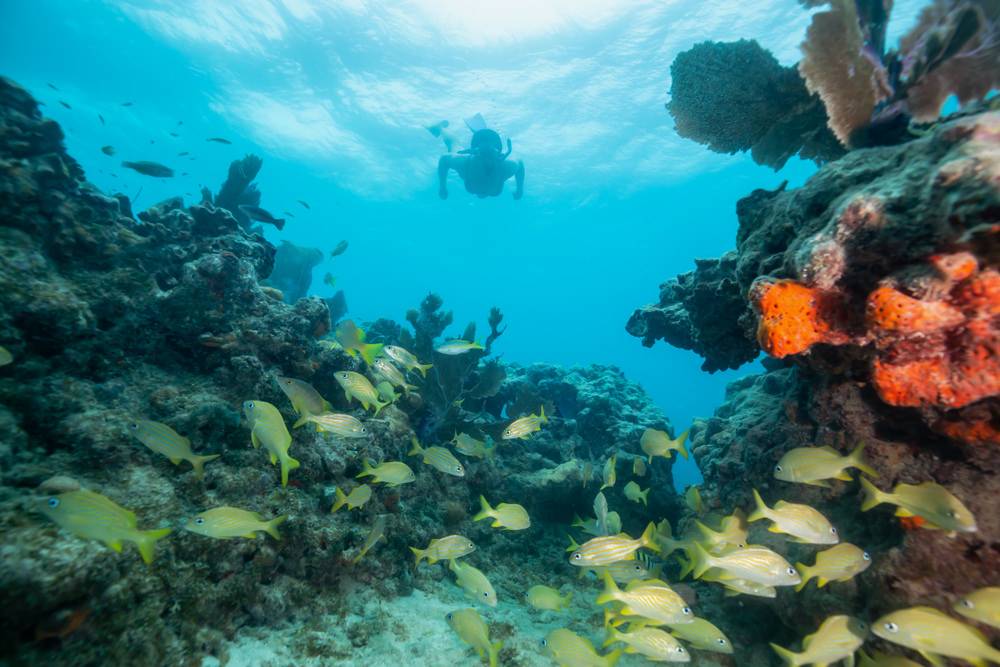
We also promote the use of reef-safe sunscreen and sun shirts. Fortunately, many sunscreen manufacturers have come to understand the damage certain chemicals cause to coral reefs and will clearly state that the product is free of oxybenzone and octinoxate on their packaging. If you need some reef-safe sunscreen or a sun shirt, just ask! Both are available in the Danger Chandlery.
Ready to set sail for a grand Key West adventure? Join us for a beautiful day of exploration and appreciation, above and below the waterline! Wishing you fair winds and following seas!

